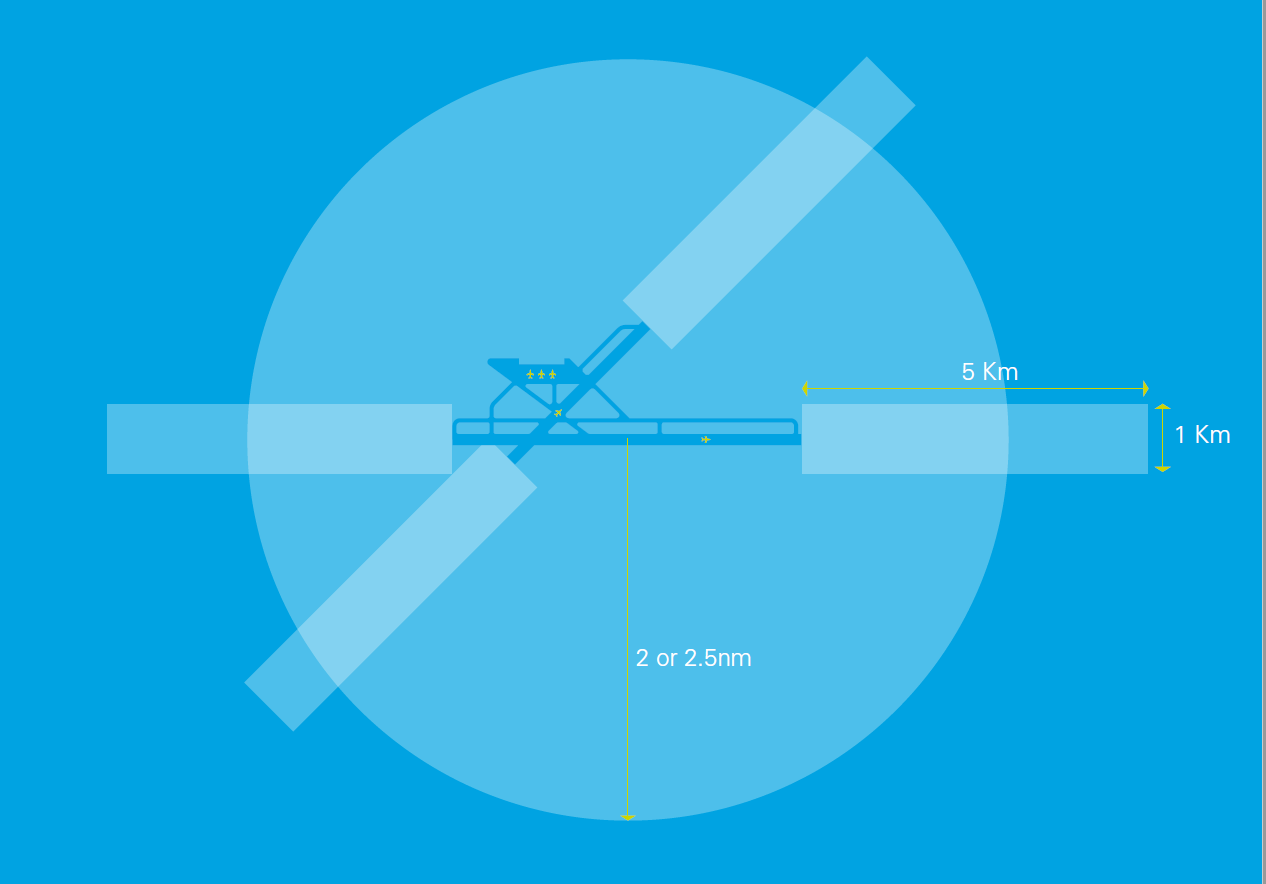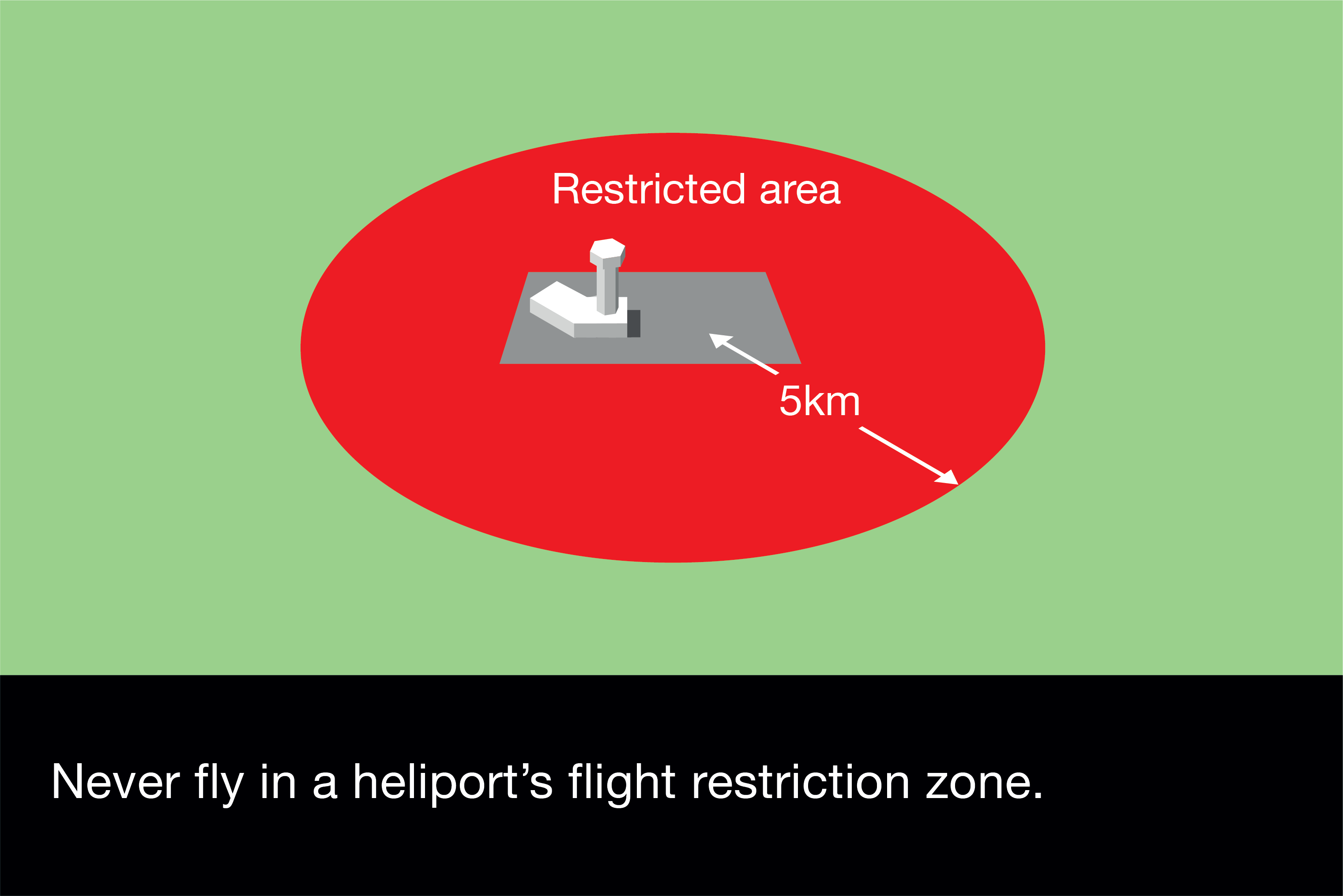A Flight Restriction Zone (FRZ) is an area around an airport, airfield, heliport or spaceport where you cannot fly a drone or model aircraft without permission.
Most airports, airfields, heliports and spaceports are protected by FRZs, which are in place to keep everyone safe.
A Flight Restriction Zone (FRZ) is a type of permanent airspace restriction.
Requesting permission to fly in an FRZ
You must get permission from the relevant site before flying a drone or other unmanned aircraft in an FRZ.
Contact air traffic control (ATC) at the site and tell them you want to request permission to fly. They will tell you their process for requesting permission.
If you cannot contact air traffic control, contact the aerodrome operator.
ATC and aerodrome contact details are listed in the UK Aeronautical Information Publication (AIP) (opens in a new tab).
Telling us if you believe your request for permission is turned down unreasonably
Aerodrome operators and air traffic control services can grant or deny access to FRZs on any reasonable grounds, including aviation safety grounds and security grounds.
We set out guidance for aerodromes on issuing permission for drone and other unmanned aircraft to operate within their FRZ in our Airspace Restriction guidance and policy (CAP722C) (opens in a new tab).
If you believe an aerodrome has not properly considered your application to fly in their FRZ, you can tell us using our Airspace Access Reporting form (opens in a new tab).
We are not able to investigate every report, but we do monitor trends and will act where appropriate and necessary. We may contact you about your report.
Unlicensed airfields and aerodromes
Some unlicensed aerodromes do not have an FRZ. You still must not fly on or near these aerodromes if doing so could pose a danger to the safety of aircraft.
Unlicensed aerodromes may not appear in the UK AIP. Always look out for light aircraft, equipment or facilities that suggest there could be an aerodrome nearby, even if it's not listed.
Unlicensed aerodromes are aerodromes that are allowed to carry out certain activities that do not require a licence from us.
Common examples include airfields and aerodromes used by general aviation flying clubs.
Flight Restriction Zones
Aerodrome FRZs
An FRZ is made up of three elements:
- Aerodrome Traffic Zone (ATZ): a 'cylinder' with the same horizontal dimension as the existing ATZ in place for traditional aviation. This a 2 or 2.5 nautical mile radius (depending on the aerodrome), centred on the longest runway. The 'cylinder' extends to 2,000ft above ground level.
- Runway Protection Zones (RPZ): 1km wide rectangular zones extending 5km out from the end of each runway, centred on the runway centre line. The RPZ extends to 2,000ft above ground level.
- Additional zones: If any area 1km beyond the boundary of the aerodrome lies outside the ATZ, the FRZ 'bumps' to 1km beyond the boundary to cover that area. Any additional zones extend to 2,000ft above ground level.
Some protected aerodromes do not have an ATZ. In these cases, the FRZ includes a circular area with a 2 nautical mile radius, regardless of the runway length.

The exact shape will depend on the characteristics of each aerodrome.
Heliport FRZs
Heliport FRZs do not include Runway Protection Zones (RPZ).

Spaceport FRZs
A spaceport FRZ is a 'cylinder' with radius of 5km, centred on the mid-point of the launch pad. The 'cylinder' extends to 2,000ft above ground level.
Spaceports include spaceport sites at sea, which may be able to move to different locations.

Example of a spaceport FRZ.

